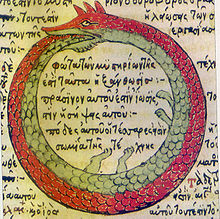
This blog discusses ideas and concepts that I am currently thinking about for my book on Hyponoetics as an integral philosophy of mind and matter.
The Acorn Metaphor in Philosophy
The metaphor of the acorn growing into an oak tree not only illustrates the concept of potentiality moving towards actuality
but also symbolizes the humanistic belief in the positive and natural development of human beings towards their fullest potential.
 ...
...
The Theory of Synnoesis
Synnoesis is a term I coined from Greek σύν (syn = with, together with, participating in) and νόησις (noesis = intelligence, understanding, mind, processes of thought). It represents the principle of sociality, of ethical and moral values regulating cooperative societies and communities. It also defines the structure of social organizations and the interaction within social institutions.
In my philosophy of Hyponoetics, I state that reality is not just given but is being continually shaped and created by us. The question now is: how do we – as conscious minds - shape the reality we...
Circle Metaphor in Philosophy
The symbol of the circle has been used throughout the history of philosophy as a universal metaphor for the notions of totality, wholeness, original perfection, the infinite, eternity, God, etc. In the following, I present some of the circle metaphors applied by philosophers, writers and artists.
Mythology
The ouroboros or uroboros (snake eating its own tail) is an ancient symbol for the eternal cycle of life, death and rebirth.

C. J....
Life is a Dream
Many philosophers and writers throughout the ages have considered life or the nature of reality as a dream or illusion. It's our mind and imagination that creates a life and reality for us human beings, but reality in itself may remain something mysterious and forever unknowable to us. But some believe that we can access the ultimate reality through a special faculty of our mind, like aesthetic intuition (art), intellectual intuition (philosophy) or meditation or mystical experience (religion).
Below I quote a few select philosophers and writers that wrote about life as a dream or compared reality...
Materialism and Idealism - A Dialogue
Schopenhauer imagined a dialogue between matter, which represents the viewpoint of materialism, and the subject of cognition, representing the viewpoint of idealism, to show that these views are not contradicting each other but are complementary parts of the whole of reality. This dialogue can be found in Schopenhauer’s handwritten legacy, volume 3, Adversaria no. 263.
What follows is my translation from the original German text.
Microcosm and Macrocosm:
a dialogue between matter and the subject of cognition.
The confl...
The Infinite and the Finite
The relationship between the Infinite and the Finite is one of the basic metaphysical principles discussed by philosophers. The Infinite does not refer to a mathematical infinite, but to an entity that is boundless, without any limitations of space and time.
To be finite is to be a thing that is limited by another thing. A finite thing possesses a limited number of properties which define that thing as different from another thing with a similar or different set of properties. Whatever has boundaries is finite. Whatever we perceive through our senses is finite, otherwise we would not be able to di...
Schopenhauer's Concept of Will
Schopenhauer called his magnum opus The World as Will and Representation (Die Welt als Wille und Vorstellung). In this blog, I will try to elaborate on the meaning of the term 'Will' (Wille) and its application to and relevance in modern science, especially quantum physics.
The concept of will has a long history in philosophy. Starting with the ancient Greek philosophers, who did not yet have an elaborate idea of will as it later developed in Scholastic and modern philosophy, the term βούλησις can mean 'willing' in general, but also 'wish', 'desire' or 'purpose'. The ...
Schopenhauer’s Theory of Psychic Phenomena
It is not well known that Schopenhauer proposed an explanation of psychic phenomena, such as clairvoyance, ESP and telepathy, based on his metaphysics of will. His open-mindedness and intention to embrace not only scientific and physical phenomena of the world but also address mental phenomena that do not fit into academic science but have a long history in human experience since the dawn of humankind, are remarkable.
Today, there is overwhelming scientific evidence that certain psychic phenomena are real and are not inconsistent with modern science, especially quantum physics. I will discuss Scho...
The View From Everywhere
A fictitious dialogue between Socrates and Timoneus, one of his students. It was on a sunny day when Timoneus visited Socrates who was engrossed in contemplation within the tranquility of a beautiful grove.
Timoneus: Our view of the world, of things and living beings, is imperfect and full of illusions. How can we attain a true and perfect view?
Socrates: Imagine that you stand in front of a mountain at its South side and direct your gaze up towards its peak. What do you see? You see a certain shape of the mountain, as it is visible to you from your point ...
Ocean-Wave Analogy
To gain a basic understanding of the concept of Hyponoesis, the following analogy may be helpful: when we speak of the ocean we do not think of single drops of water that make up the ocean, but just of water as the primary substance. However, when we look at the surface of the ocean, we can make out an infinite number of constantly changing waves, spumes (sea form) and water droplets. If we were only aware of those surface forms and not of the underlying ocean, we would come to think that all these forms exist independently from each other. A...
On the Existence of God
Millions of people believe that God exists. Although they picture and describe this God in many different ways, we assume that there is only one God, one reality. Some religions, such as Hinduism, propose a world of "Gods". However, these manifestations of God are only aspects of the one God. I think it is safe to claim that God is the ultimate and unitary reality. Everything that exists is created and sustained by this reality.
Philosophers and scientists as well postulate a fundamental and unitary reality from which everything that exists originates. They name it differently, though, such as <...
Why is there something rather than nothing?
This metaphysical question is one of the most fundamental questions in philosophy. It points to the ultimate reality or source that produces the plurality of physical and mental phenomena. The word 'existence' is applied to any singular entity that subsists in the time-space continuum of the universe. Existence is basically presence, being present to our experience, which furthermore means being an object of our mind, of our thinking. Things do not exist independently of our mind, but that does not mean that they are only objects or ideas of our mind. However, they become existent things (existants) for us through ...
Intellectus Archetypus and Ectypus
The term 'archetype' (from Ancient Greek ἀρχέτυπον = archetype, pattern, model, also original image or idea (Urbild)) was first used by Plato to refer to the metaphysical forms or ideas, in which the sensible and perceptible things participate.
In modern philosophy, both Locke and Descartes introduced the term as the foundation of representations in our mind:
...dass in uns keine Idee oder kein Bild einer Sache sein kann, von dem nicht irgendwo in uns selbst oder ausser uns ein Urbild (archetypus) existiert, das...
Problem of Universals
Since the ancient Greek philosophers (esp. Plato and Aristotle), the question what a universal is, whether it exists ontologically or only epistemologically, and what its relation is to particulars, has occupied the mind of philosophers. Below, I summarize the main theories.
Platonism
In Plato, the universal as an abstract entity has its own independent spiritual being. The ideas are the actual being and constitute the reason for being and knowledge for the material single things. For Plato true knowledge is only possible of something immutable. The things perceptible by the s...